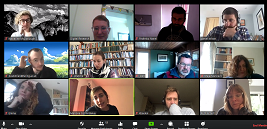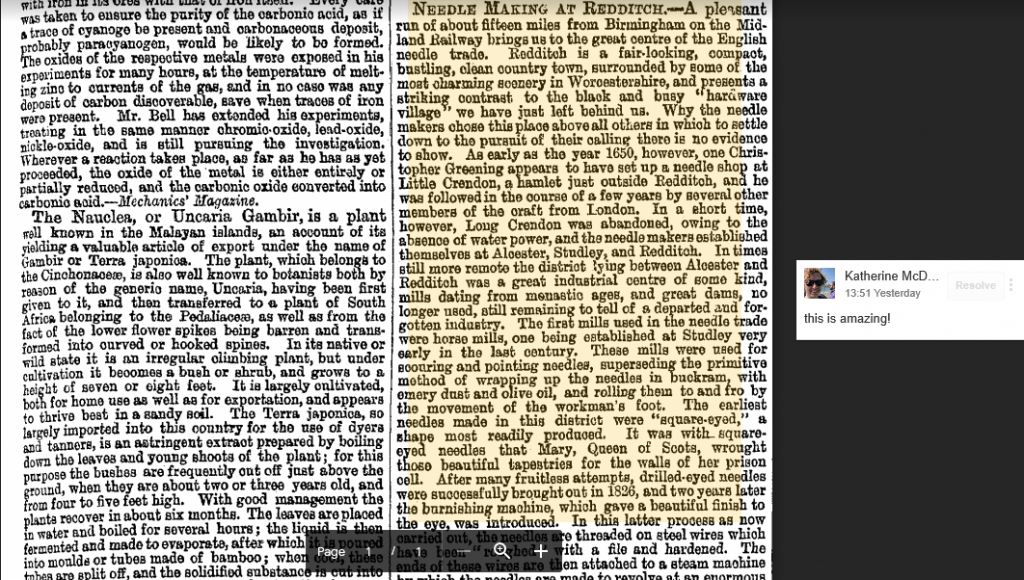Running a remote workshop via a Zoom video call: some quick lessons learnt
As we look for ways to make interactive online video calls more effective, I’ve noted some lessons learnt from running an interactive mini-workshop with breakout rooms in Zoom. Overall, I was pleasantly surprised at how well it worked. Breakout groups were able to discuss a topic then report back, and we found enough common ground to move to the next stage.
The context
We’re working on a new crowdsourcing task for the Living with Machines project. We’d previously narrowed down some parameters but needed to collaboratively refine a research question to the point where I could devise crowdsourcing tasks to feed into the wider process.
The first part of the process was reviewing sample newspaper articles that mention ‘machines’ to both get a sense of the source material and think about possible research questions or angles. The second was to share ideas from the review, discuss how they related to other research activities across the project, and hopefully agree on a research question to take forward.

The process
I was using a version of the ‘think-pair-share’ framework to structure the discussion (described in Liberating Structures as 1-2-4-all). While it’s mostly used in teaching, I like it as a brainstorming format when people might need time to think or aren’t as comfortable jumping into the fray. The basic idea of think-pair-share is that people are given a prompt – in our case, look through our sample of newspaper articles and think about what themes or questions emerge – to think about for a few minutes on their own. They then ‘pair’ to discuss their ideas with 2 or 3 others – there’s no need to come to any consensus, but hopefully some common or new ideas will emerge in the discussion. Finally, the group reconvenes to share ideas together.
Once you’ve explained the process, that’s all pretty straightforward in an in-person setting. I was hoping that I could replicate something like it in Zoom, using its ‘breakout rooms’ function for the ‘pair’ part of our mini-workshop.
(While there are reasonable privacy concerns about Zoom, it’s the project default as the Alan Turing Institute uses for video conferencing in their offices in the British Library.)
The lessons
In no particular order:
- You can’t assume that people will have looked at pre-meeting notes, especially when they’re likely to be dealing with all sorts of distractions at home, so recap the key points and goals at the start.
- Outline the process, ideally with supporting text, so that everyone knows what’s going to happen when. New processes can be daunting, especially when there aren’t any physical cues to help.
- I wasn’t sure if I’d have to assign participants to rooms, but Zoom has a function to do that automatically. I set it to have enough rooms that each would have 2 – 3 participants.
- The moderator can pop into rooms. I really liked this as I tend to walk around and check in on groups during in-person workshops. It gave me a sense of how each group was going, troubleshoot any issues they’d had, and generally learn from their discussion.
- When you close the breakout rooms, there’s a 60 second delay before they close (turns out you can change this). However, the countdown timer is not that obvious and few noticed it.
- You can ‘broadcast’ chat messages to rooms (but like the countdown timer, I don’t know if anyone noticed the chat icon alerting them to my messages).
- I asked for a volunteer to take notes (thanks Olivia!), which freed me up to keep an eye on the agenda. Complex remote activities seem to benefit from a moderating team and from keeping chat and calls on the one platform.
- I closed by summarising what I’d heard as groups reported back, which I hope gave people a chance to make sure it reflected our discussion.

